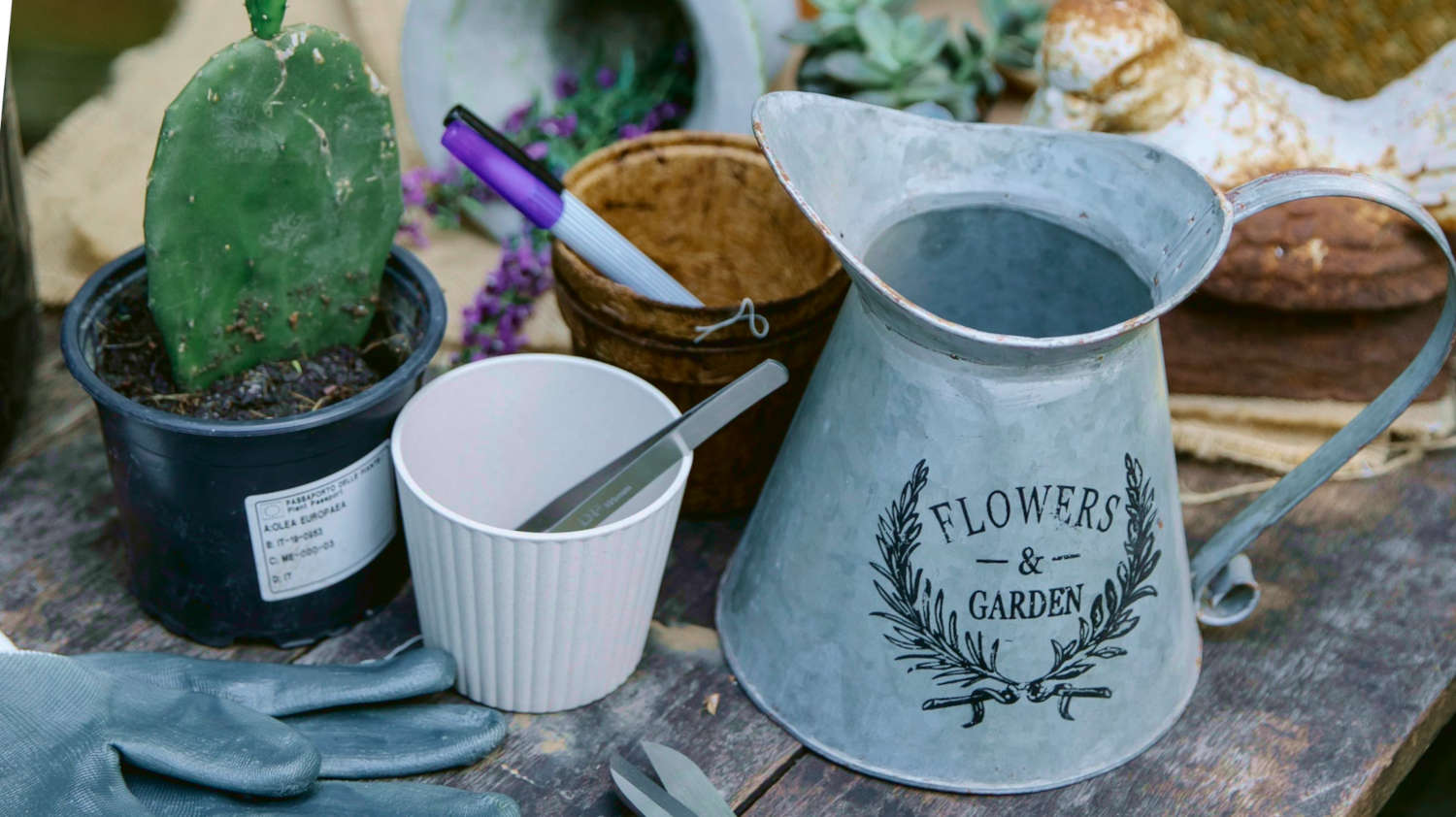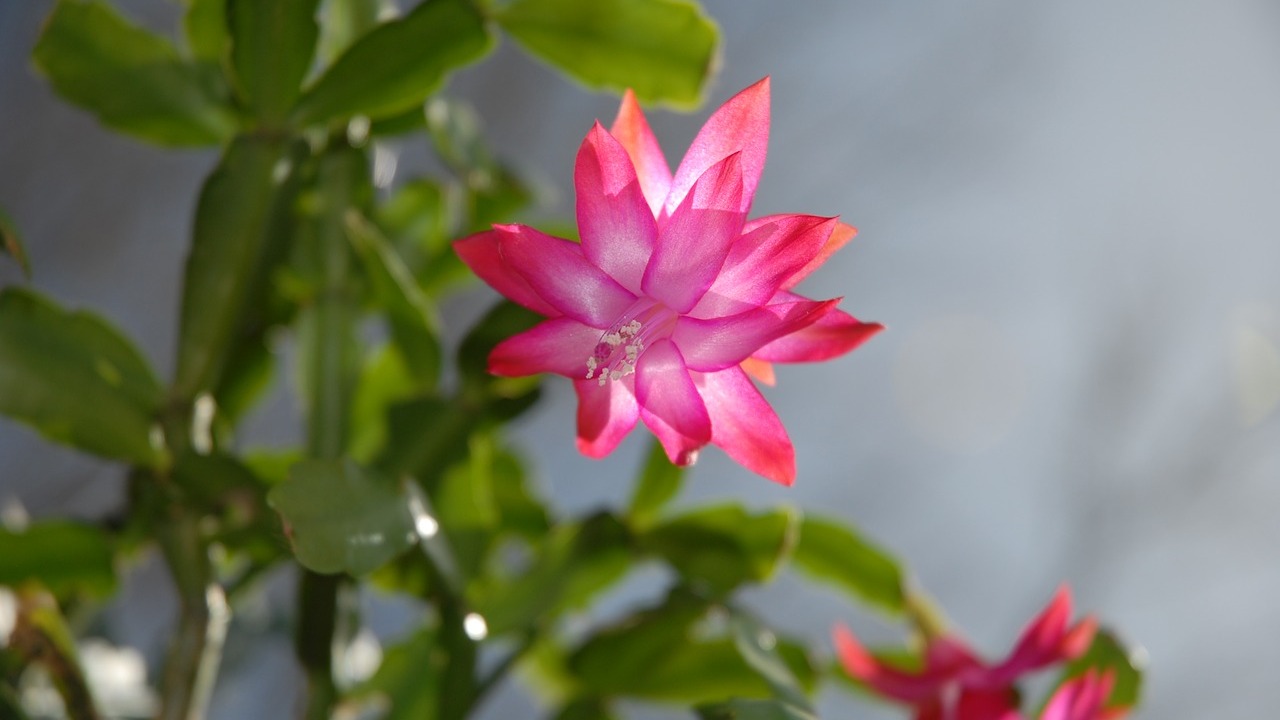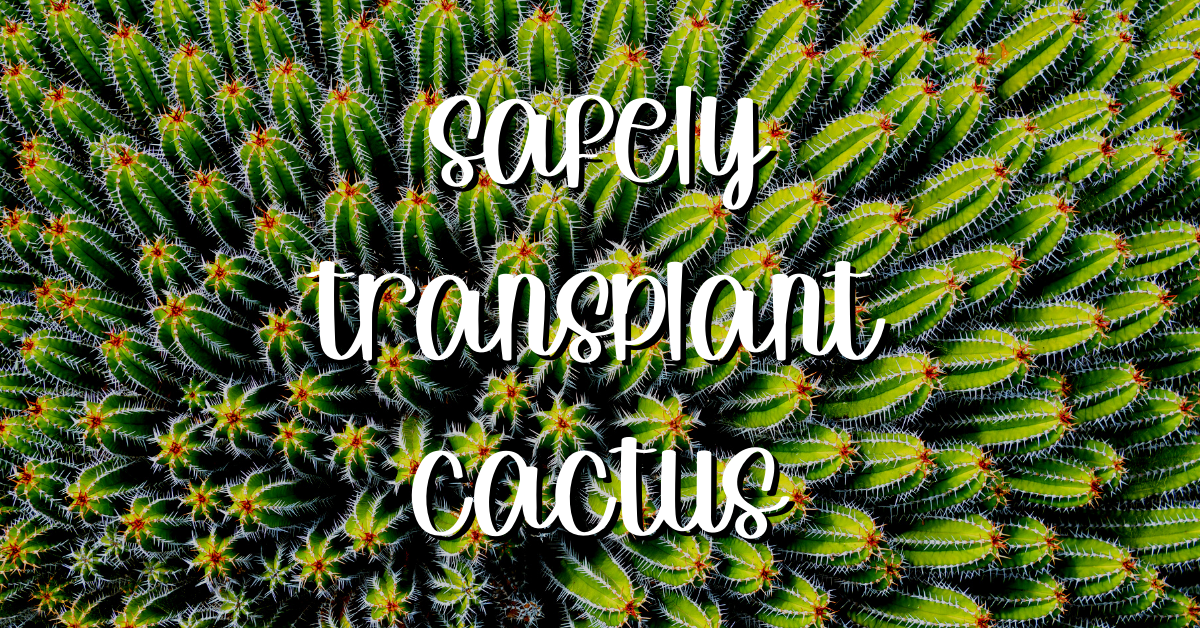When Is It Time for a Cactus Transplant?
Knowing when to transplant a cactus is crucial for its health and continued growth. Several key signs indicate that it’s time to consider how to transplant a cactus. One of the most obvious is when roots start growing out of the drainage holes at the bottom of the pot. This signals that the cactus has outgrown its current container and needs more space to develop its root system. Another indicator is slow growth; if your cactus has seemingly stopped growing, even during its normal growth season, it might be root-bound. This means the roots have filled the pot to the extent they can’t absorb nutrients properly. Soil degradation is another sign, as over time the potting mix breaks down, losing its drainage properties and becoming depleted of vital nutrients, thus affecting the plant’s ability to thrive and making it necessary to consider how to transplant a cactus. While transplanting is essential when needed, it’s worth noting that it is a somewhat stressful experience for cacti, so it should be done only when absolutely necessary to avoid unnecessary disturbance.
Understanding these cues is essential for any cactus owner. The need to know how to transplant a cactus arises from the fact that cacti in pots are limited by the size of their container. When the roots have no more room to grow, the plant’s overall health will suffer, potentially leading to stunted growth, nutrient deficiencies, and increased susceptibility to diseases. Therefore, taking action at the right time is important for the long-term well-being of your spiky friend. Failing to transplant when needed can lead to a cascade of problems, so being observant and aware of the signs will help you keep your plant happy and healthy. Deciding when to proceed with the action of how to transplant a cactus at the right time will avoid problems in the long run and will provide the ideal space and soil to promote optimal growth.
Gathering Your Cactus Transplanting Supplies
To ensure a safe and successful process when learning how to transplant a cactus, it’s essential to gather all the necessary tools and materials beforehand. This preparation minimizes stress for both you and your spiky friend, contributing to a smoother transition. First, an appropriately sized pot is crucial; select one that is only slightly larger than the current one, typically one to two inches wider in diameter. This prevents the soil from retaining too much moisture, which can be detrimental to cacti, and it allows room for root expansion. Additionally, a well-draining potting mix specifically formulated for cacti and succulents is non-negotiable. Regular potting soil retains too much water, which can lead to root rot. These specialized mixes often contain sand, perlite, or pumice, promoting the required aeration and drainage vital for cactus health. Protecting yourself is equally important; a sturdy pair of gardening gloves is essential to avoid painful encounters with the cactus’s spines. A trowel or small shovel is useful for loosening soil and carefully moving it around the plant during the repotting process. To further protect your work area, newspaper or cardboard should be placed beneath your work area to catch any stray soil. Finally, consider adding a layer of gravel or small stones to the bottom of the new pot to enhance drainage, which is important because when learning how to transplant a cactus, excessive moisture is one of the biggest risks.
The type of pot is a factor to consider when you learn how to transplant a cactus. Terracotta pots, known for their porosity, are excellent choices as they aid in moisture regulation and evaporation, reducing the risk of water accumulation around the roots. On the other hand, plastic pots retain water for longer periods, which can be suitable for hot climates or less-frequent watering schedules. A suitable pot with good drainage and the right soil mix are pivotal for the health of a newly transplanted cactus. These are not just items, but rather critical components for ensuring the cactus has the best chance at thriving in its new container. The trowel or small shovel makes handling the soil more precise, helping you avoid disturbing the cactus roots unnecessarily. And, a small brush may be useful to remove any excess soil after transplanting. It’s the attention to these details that makes the process of how to transplant a cactus successful, ensuring the plant not only survives the move but also flourishes in the long run. Remember, every item serves a purpose and contributes to making the transplant process as seamless and stress-free as possible.
How to Prepare Your Cactus for Relocation
Prior to physically handling your cactus for transplant, a few key preparation steps are crucial to minimize stress and ensure the plant’s well-being. Firstly, the soil must be relatively dry. This makes the soil less likely to cling tightly to the roots, simplifying the removal process and reducing the risk of root damage. It’s essential to avoid transplanting a cactus when the soil is damp or wet, as this can lead to a muddy, heavy root ball that’s difficult to manage. Carefully inspect the soil surface and remove any pebbles, decorative stones, or other materials that might obstruct the easy lifting of the cactus. These items, if left in place, can become entangled with the roots during removal. This detailed preparation will allow for an easy move, which is a critical step in how to transplant a cactus. It minimizes the risks of damaging the cactus and allows for a smoother transition into its new pot.
A day or two before you plan to transplant your cactus, it can be advantageous to lightly water it. The goal is to slightly moisten the soil, which helps the root ball remain somewhat cohesive when you are how to transplant a cactus. Avoid saturating the soil; the objective is merely to keep it from becoming bone dry. This gentle moisture helps the cactus maintain hydration during the repotting process, preventing excessive dryness that could stress the plant after the move. The slight dampness, compared to a completely dry state, also encourages the soil to gently release from the sides of the pot, making the extraction process less likely to damage delicate root structures. When learning how to transplant a cactus, focusing on gentle preparation is just as vital as the actual repotting steps. By observing these critical steps, you create the optimal conditions for a successful cactus relocation, minimizing disturbance and facilitating the plant’s recovery and adaptation to its new container. These techniques in preparing to how to transplant a cactus will improve the cactus health and growth.
Step-by-Step Guide to Repotting Your Cactus
To successfully learn how to transplant a cactus, begin by gently loosening the soil around the cactus in its current pot. Use a trowel or small shovel to carefully work the soil away from the sides and bottom of the root ball. This process is crucial for minimizing damage to the delicate roots during removal. Protecting your hands is paramount; thick gloves designed for handling thorny plants are highly recommended. Once the soil is loosened, gently grip the base of the cactus, supporting its weight to prevent breakage, and begin to lift it from the pot. If the cactus resists, gently rock it back and forth to help release the roots from the container. For particularly stubborn plants, carefully using a thin, blunt instrument like a butter knife, or even a plastic spatula, to ease the root ball from the pot may be necessary. Remember to always support the plant’s weight and avoid applying excessive force to prevent damage.
If the root ball is tightly bound and the cactus remains stubbornly stuck in its old home, soaking the pot briefly in water can help soften the soil and loosen the roots. Be cautious not to over-soak, as excessive moisture can lead to root rot. Once the cactus is free from its pot, carefully examine the roots. Gently remove any dead, decaying, or damaged roots using clean, sharp pruning shears. This is a critical part of learning how to transplant a cactus successfully, as it helps prevent the transmission of disease to the healthy roots. If the root system is very dense, carefully teasing apart some of the root ball can improve drainage and airflow around the roots in the new pot. Remember to handle the cactus firmly but delicately during this stage, as its spines can easily pierce the skin.
When handling a cactus, remember that patience and a gentle touch are essential. Rushing the process could lead to breakage or damage to the delicate spines and fragile roots. The goal when learning how to transplant a cactus is to ensure minimal disruption to the plant’s structure. By following these steps, you can greatly reduce the risk of injuring your spiky friend during the transplanting process and ensure its successful relocation to its new home. Successfully transplanting a cactus requires a thoughtful and deliberate approach, prioritizing the plant’s well-being throughout every step of the procedure.
Planting Your Cactus in its New Home
Preparing the new pot correctly is crucial for a successful cactus transplant. Begin by selecting a pot that is only slightly larger than the previous one to avoid overwatering issues, which can be detrimental to cacti. If desired, place a layer of gravel or small stones at the bottom of the pot to enhance drainage; however, this is not always necessary if using a well-draining potting mix. Next, fill the pot about one-third full with a fresh, well-draining potting mix specifically formulated for cacti and succulents. This type of mix provides the necessary aeration and drainage that cacti need to thrive. When positioning your cactus in its new home, ensure that the top of the root ball is level with the top of the new soil, or slightly above, to prevent the stem from being buried too deeply. Carefully lower the cactus into the center of the pot, holding it upright as you begin to fill in the surrounding space with the remaining potting mix. Avoid pressing down the soil excessively. The key to a successful how to transplant a cactus is the soil being just firm enough to provide support but not so compacted that it restricts drainage.
Once the cactus is positioned, slowly add more potting mix around the sides of the root ball. As you add the mix, gently tap the sides of the pot to help the soil settle, which prevents the formation of air pockets that could potentially damage the roots. Continue adding the mix until it reaches the level of the root ball, ensuring that the base of the cactus stem is not buried too deep. It’s important to leave a small gap between the top of the soil and the rim of the pot to allow for adequate watering without overflow. After the cactus is in place, you should not over water. How to transplant a cactus correctly requires ensuring that the cactus is stable within its new pot. Once you have filled the pot with the necessary soil and the cactus is well positioned, avoid any large movements. If you have followed all steps correctly, you are almost ready to begin the post transplant care.
Post-Transplant Cactus Care and Considerations
Immediately after you complete how to transplant a cactus, it’s crucial to provide the correct after-care to ensure its successful establishment in the new pot. Watering should be approached with caution; avoid overwatering at all costs. The soil should be allowed to dry out completely between waterings, mimicking the cactus’s natural arid environment. A good rule of thumb is to wait several days, or even a week, before watering the transplanted cactus, depending on the humidity levels and the potting mix used. When you do water, do so thoroughly, allowing excess water to drain from the bottom of the pot. Sunlight exposure is another critical factor; place the newly transplanted cactus in a location with bright, indirect light. Direct sunlight can be too intense for a cactus that is recovering from being transplanted, potentially leading to sunburn. Over the next few weeks, you can gradually expose it to more sunlight to achieve its desired light exposure. Fertilization should be avoided for several weeks after the transplant. The fresh potting mix will contain sufficient nutrients for a period, and adding more fertilizer too soon could stress the cactus. Instead, monitor the cactus closely for any signs of stress, such as wilting, discoloration, or a soft stem which could indicate root rot, the most common problem after a transplantation. If you observe any of these issues, it is crucial to adjust your watering accordingly and address the underlying causes promptly.
Careful monitoring of your cactus is essential in the days and weeks following how to transplant a cactus. It’s important to be especially watchful for any signs of infection, which may manifest as soft, mushy spots on the plant. This could potentially be the result of the stress from the transplant process or, most commonly, from overwatering. Should this occur, it’s important to take action to prevent the infection from spreading, potentially by removing the damaged tissue if necessary. Pay attention also to the development of new growth; new spines, or the appearance of a new stem are all encouraging signs that the plant is establishing itself in its new container. Continue to provide bright, indirect light and only water when the soil is completely dry and never leave the pot sitting in standing water. If the cactus is positioned outdoors or on a sunny windowsill, you may need to move it to prevent it from getting too hot. You may also need to rotate it occasionally to ensure even exposure to light. These small adjustments will help the transplanted cactus thrive in its new location. By being vigilant and proactive, you will significantly increase the chances of a successful transplant and a healthy, vibrant cactus.
Troubleshooting Common Cactus Transplant Issues
When learning how to transplant a cactus, it’s important to be prepared for potential problems that might arise post-transplant. One of the most common issues is root rot, often a result of overwatering. If the cactus begins to appear soft or mushy, especially at the base, it’s a strong indicator of root rot. To address this, immediately cease watering and allow the soil to dry out completely. If the rot is severe, you may need to carefully remove the cactus from its pot, trim away any affected roots with a sterilized cutting tool, and repot it in fresh, dry cactus mix. Another frequent problem is wilting, which can indicate either underwatering or transplant shock. If the soil is dry, gently water the cactus; however, if the soil is moist, the wilting may be due to transplant shock, and it might take some time for the cactus to recover. Avoid direct, intense sunlight during this recovery period, as it can further stress the plant. Slow growth is another concern; if the cactus shows no signs of new growth for an extended time, it could be due to inadequate sunlight, poor soil quality, or a lack of nutrients. Evaluate these factors to identify the problem and adjust accordingly.
Another issue to consider when learning how to transplant a cactus is the possibility of fungal or bacterial infections, which can occur due to injury to the cactus or poor environmental conditions. Look out for unusual spots, discoloration, or the growth of mold on the cactus. If you notice these, consider applying a suitable fungicide or bactericide after proper diagnosis, as this can be particularly important in preventing the spread of diseases and further damage to the plant. Sometimes, cacti might develop a white powdery substance on their surface. This can often be a sign of mealybugs or scale insects and they should be dealt with quickly. It’s important to routinely inspect the cactus post-transplant for such pests. Furthermore, it’s essential to remember that cacti are slow growers, so be patient and avoid overreacting to minor changes. Observe your cactus carefully and address any problems as they arise, making small adjustments to care practices as needed. Learning how to transplant a cactus effectively also requires being able to adapt to the plant’s needs and conditions after the move.
Long-Term Cactus Care After Relocation
Long-term care following the process of how to transplant a cactus involves several key factors to ensure its continued health and vigor. Watering, for instance, should be approached with caution. Cacti are adapted to arid environments and are highly susceptible to root rot if overwatered. Allow the soil to dry out completely between waterings. The frequency of watering will vary depending on environmental conditions like temperature, humidity, and the amount of sunlight the cactus receives. During the warmer growing season, watering may be more frequent, while in the cooler dormant months, the cactus will require less water. Avoid leaving the pot sitting in water, as this can lead to root rot. Light is another critical aspect; most cacti thrive in bright, direct sunlight. A south-facing window or a spot outdoors that receives ample sunlight is typically ideal. If the cactus is not receiving enough light, it might start to etiolate, becoming elongated and pale. Fertilization is generally not necessary frequently, as cacti are slow-growing plants. However, during the growing season, a diluted cactus-specific fertilizer can be applied sparingly a few times to provide essential nutrients. It’s important to avoid over-fertilizing as this could be more harmful than beneficial.
The need to how to transplant a cactus again in the future will depend on the growth rate of the specific cactus species and the size of its current container. Signs that another repotting might be needed include roots emerging from the drainage holes, slow or stunted growth despite adequate care, or the soil becoming compacted and less well-draining. When transplanting in the future, the same precautions and steps should be followed to minimize stress and ensure the cactus can successfully adapt to its new environment. Monitor your cactus regularly, paying attention to any changes in its appearance, texture, or growth. Discoloration, soft spots, or drooping can signal issues that require attention. Proper care and observation will ensure that your transplanted cactus thrives. Be mindful of pests, though cacti are generally resilient. Regularly inspect your plant for common pests like mealybugs and scale insects. Addressing these issues promptly is essential for the long-term health and appearance of your cactus. Remember that cacti need minimal human interaction and thrive when left undisturbed in the proper environmental conditions.
In summary, maintaining a healthy cactus post-transplant focuses on creating conditions that mimic its natural environment, emphasizing proper watering techniques, suitable light exposure, and infrequent fertilization. Understanding the unique needs of your cactus variety and observing its responses will help to guide your care routine, preventing overwatering or underwatering and ensuring the cactus has everything it needs to flourish. Learning how to transplant a cactus correctly sets the stage for long-term growth and a healthy plant. By following these long-term care guidelines, you’ll help your cactus thrive, allowing you to enjoy its unique beauty and resilience for years to come.




